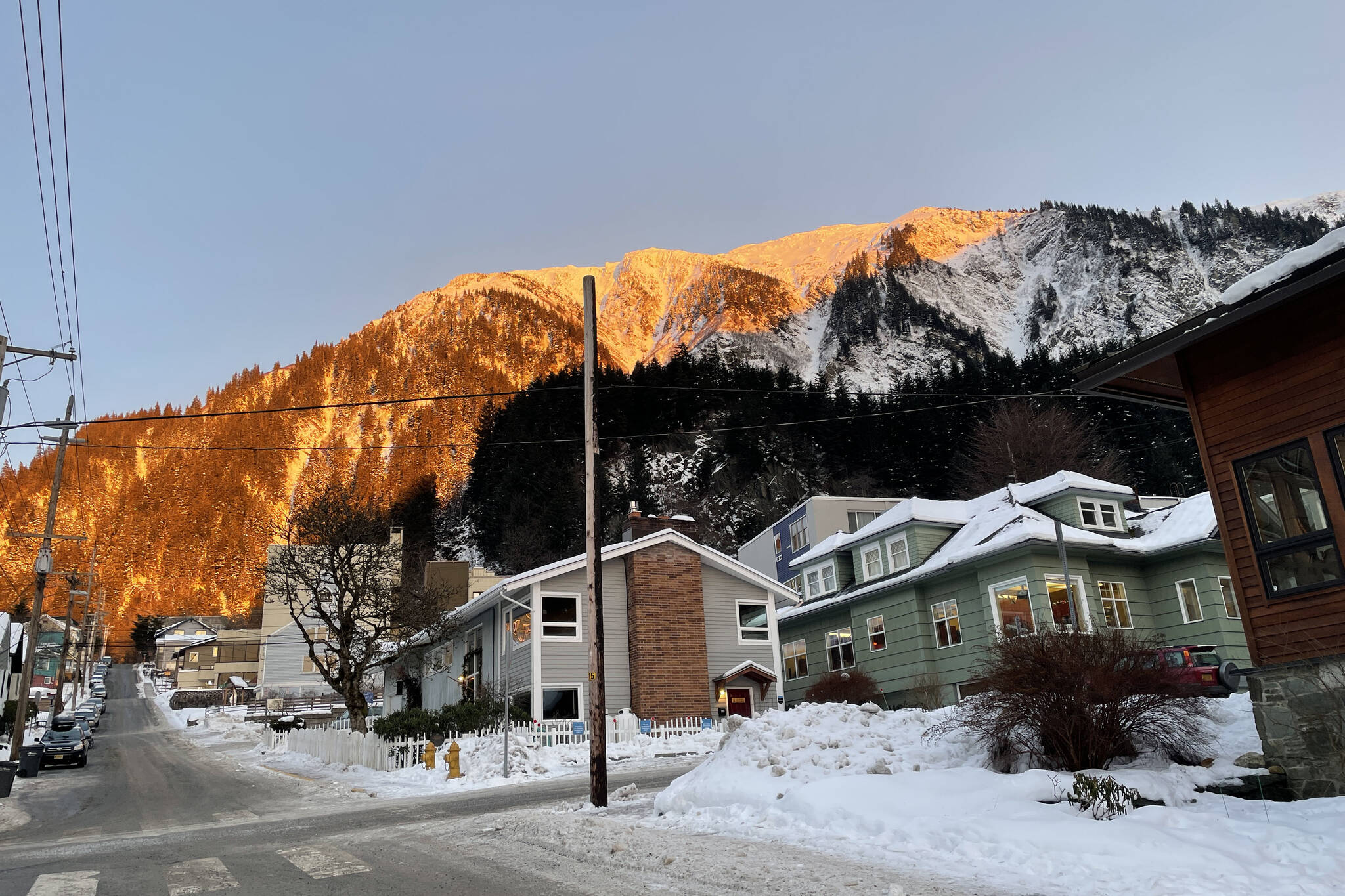As snow falls, Juneau is entering the shortest day of the year — and the turning point, as the days begin to gain more light.
Juneau will begin gaining 30 seconds of light a day, stretching to as much as 5 more minutes of light each day by the spring equinox, said Marie Drake Planetarium lecturer Steve Kocsis.
“The whole reason for the solstice is the tilt of the Earth’s axis,” Kocsis said in a phone interview. “The solstice is always seen as a turning point. It’s the longest night of the year.”
[Shopping aisle be home for Christmas]
The solstice will occur when the sun hits its very furthest point south, which occurs Tuesday morning for Alaska.
“It’s tomorrow Alaska time around 6:58 a.m.,” Kocsis said. “At Rio de Janeiro tomorrow, the sun will be directly overhead tomorrow at noon.”
Rio de Janeiro is located 22.9 degrees south, giving it nearly 12.5 hours of daylight on the solstice. By contrast, Kocsis said, Juneau will see sunrise at 8:45 a.m. and sunset at 3:10 p.m., giving Juneau fewer than 7 hours of daylight. It won’t get any darker here, pausing for one day tomorrow and then beginning to grow later.
“Solstice means standing still,” Kocsis said. “We’re at 58 degrees latitude. You go north, (the change in light per day) is more extreme, you go south, it’s less extreme.”
The word solstice itself comes from latin for sun, sol, and stit, which was part of the Latin verb sistere, meaning to stand still, creating the word solstitium, according to the Merriam-Webster Dictionary. English speakers later shortened it to solstice, Merriam-Webster said.
Juneau’s far northerly location means the sun will barely clear the horizon on the solstice. In Fairbanks, the sun will rise at 10:57 a.m. and set at 2:39 p.m. And in Utqiaġvik, the sun won’t rise at all, with its first sunrise of the new year on Jan. 22, 2022, according to the National Oceanic and Atmospheric Administration.
“It’s the southernmost point of the sun in the sky. It’ll be about 8 degrees above the horizon at local noon,” Kocsis said. “If you hold your fist out at arm’s length, that’s about 8 degrees.”
For those with a yen to learn more about the workings of the vast heavens and their dark halls full of bright burning stars, the planetarium is reopening for shows, including one before the new year, said Christina Della-Rosa, president of the board of the Marie Drake Planetarium.
“We’ve started restarting shows with just small audiences because of COVID,” Della-Rosa said in a phone interview.
Shows are free but do require guests to register ahead of time at MarieDrakePlanetarium.org, Della-Rosa said.
• Contact reporter Michael S. Lockett at 757-621-1197 or mlockett@juneauempire.com.

